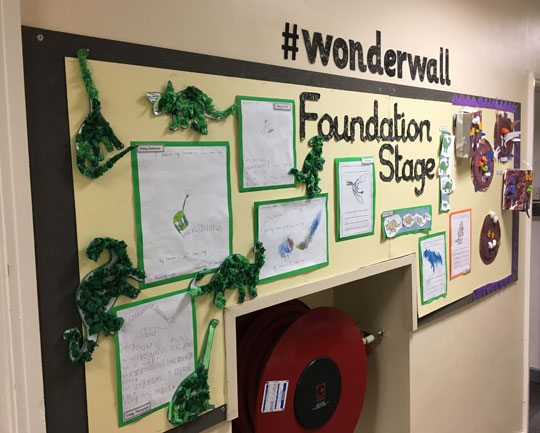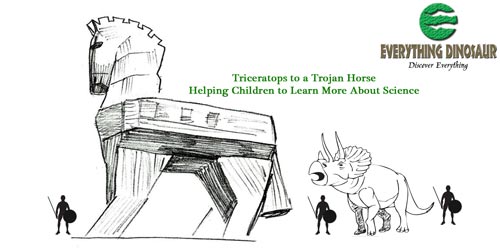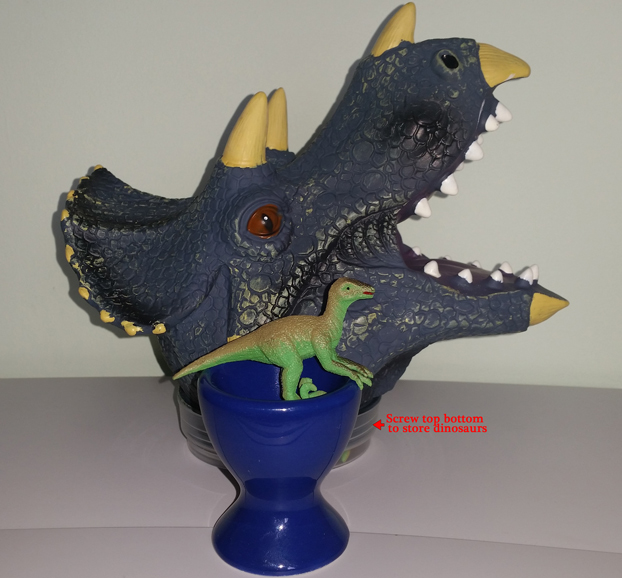Fossils and Dinosaurs Inspire the Next Generation of Young Scientists
Teachers, home educators and other learning support providers often find that a child’s fascination with fossils and dinosaurs can help them with their studies at school. With the teaching profession now handling a more creative curriculum, many members of the teaching fraternity are using children’s love of all things dinosaur to help encourage them to participate in science based learning and to explore concepts such as observation, investigation and experimentation.
Dinosaur Themed Teaching activities
Everything Dinosaur team members have described this as “like using Triceratops as a Trojan Horse”. Pupils can learn key scientific skills and explore concepts using a range of activities enabling plenty of differentiation in the classroom. A new dinosaur species is named every thirty days or so and something in the region of 1,250 genera in the Dinosauria have already been described. These ancient reptiles certainly have a high media profile and a child’s interest in fossils and dinosaurs can help teaching practitioners to develop inspiring lesson plans.
Triceratops as a “Trojan Horse”
Picture credit: Everything Dinosaur
Providing Teaching Examples
Let’s look at some typical examples, with an emphasis on pupils studying the national curriculum at Key Stage 2 (England and Wales). The difficult to comprehend concept of “deep time” can be illustrated using a simple timeline. Children can plot on the timeline the dates when certain types of prehistoric animal lived. This timeline idea can be developed to incorporate when dinosaurs lived relative to the people the children may have already studied such as the Ancient Egyptians and the Romans.
By plotting a to-scale time line showing the age of reptiles, students, under the supervision of the teaching team can construct a linear diagram that demonstrates when certain dinosaurs lived and relates this time to the time of Ancient Rome, the Greeks and such like. With a time scale of approximately 1 centimetre representing 1 million years the children can place events in the correct order, an objective outlined within the national curriculum teaching objectives and aims. Pupils can gain an appreciation of which dinosaurs lived in which geological period and what other prehistoric animals were around at the same time.
Additional resources, many of which are available free from Everything Dinosaur, can then be employed to help the children to learn more about individual animals such as Tyrannosaurus rex and Triceratops. This leads onto further extension activities such as independent learning about that dinosaur, poster creation, creative writing, story telling and so forth.
A Handy Tip
My tip when making a timeline with school children is to use a scale of one million years equates to one centimetre and to plot the timeline over a period of 250 million years to the present day. This gives teachers a timeline of some 2.5 metres in length, easily big enough to fit nicely on a classroom wall and it makes a great display.
Displaying the Work – Essential Reinforcement for Young Learners

The Foundation Stage “wonder wall” full of dinosaur facts and information (Carlton Primary School). Picture credit: Everything Dinosaur.
Picture credit: Everything Dinosaur
Working with EYFS
Dinosaurs lend themselves to working with reception/foundation children. When consulting on Early Years Foundation Stage (EYFS), it is important to help children understand the nature of materials and the world around them. The EYFS framework has recently been revised with new teaching standards incorporated for early years providers. This teaching framework helps to prepare reception/foundation children for school and ensures that children develop the key skills required to help them make good progress.
Many teachers are making “Dinosaurs” the first, major topic that the children encounter. Dinosaur models and fossils can help them to explore the properties of different materials and even dinosaur toys can help them learn about different parts of the human body. Basic selection and counting games can be encouraged such as selecting all the models of prehistoric creatures that have four legs, count the number of red ones and so forth. The children are effectively learning through creative play.
Plastic, Colourful Dinosaurs are Ideal for Sorting and Selecting Challenges
Picture credit: Everything Dinosaur
Introducing Mathematical and Scientific Concepts
For children at the upper Key Stage 2, cusp of Key Stage 3, a maths lesson can be made more challenging and fun by utilising a dinosaur track with dinosaur footprints. The pupils can familiarise themselves with accurate measuring, use of scale and from this comparisons can be made with their own feet and hands. Such simple, yet imaginative props can really enliven a maths lesson and help to get across important concepts and ideas.
At one school, a member of the Senior Leadership Team was asked to step in and conduct a hour long maths class with a group of year 7 children (Key Stage 3 age 11-12 years). He consulted one of Everything Dinosaur’s dinosaur experts and borrowed some footprint drawings and laid out a series of dinosaur tracks in the school hall. The class was split into groups and the students challenged to use rulers and tape measures to work out as much information about the prehistoric animal that left the tracks as possible.
Stimulating Lesson Plans
The lesson plan included a section on using scale drawings and calculating the average (the mean). It was a very memorable and rewarding lesson that helped the students get to grips with simple scientific ideas such as plotting, mapping and using basic equations.
To read a recent blog post about Everything Dinosaur team members visiting a school: Everything Dinosaur Visits Anfield Primary School.
Helping to Inspire the Next Generation of Scientists
A teaching team can use children’s interest in prehistoric animals to help them learn about the world around them. A dinosaur themed term topic or a series of activities as part of a science week permits teachers to develop imaginative and engaging lessons. Importantly, it also means that such plans will permit plenty of differentiation and extension as well as dove-tailing into the different needs of pupils and learning styles.
To view the range of educational, prehistoric animal themed toys and games available from Everything Dinosaur including models of iconic fossil animals: Dinosaur Toys and Games and Models.



